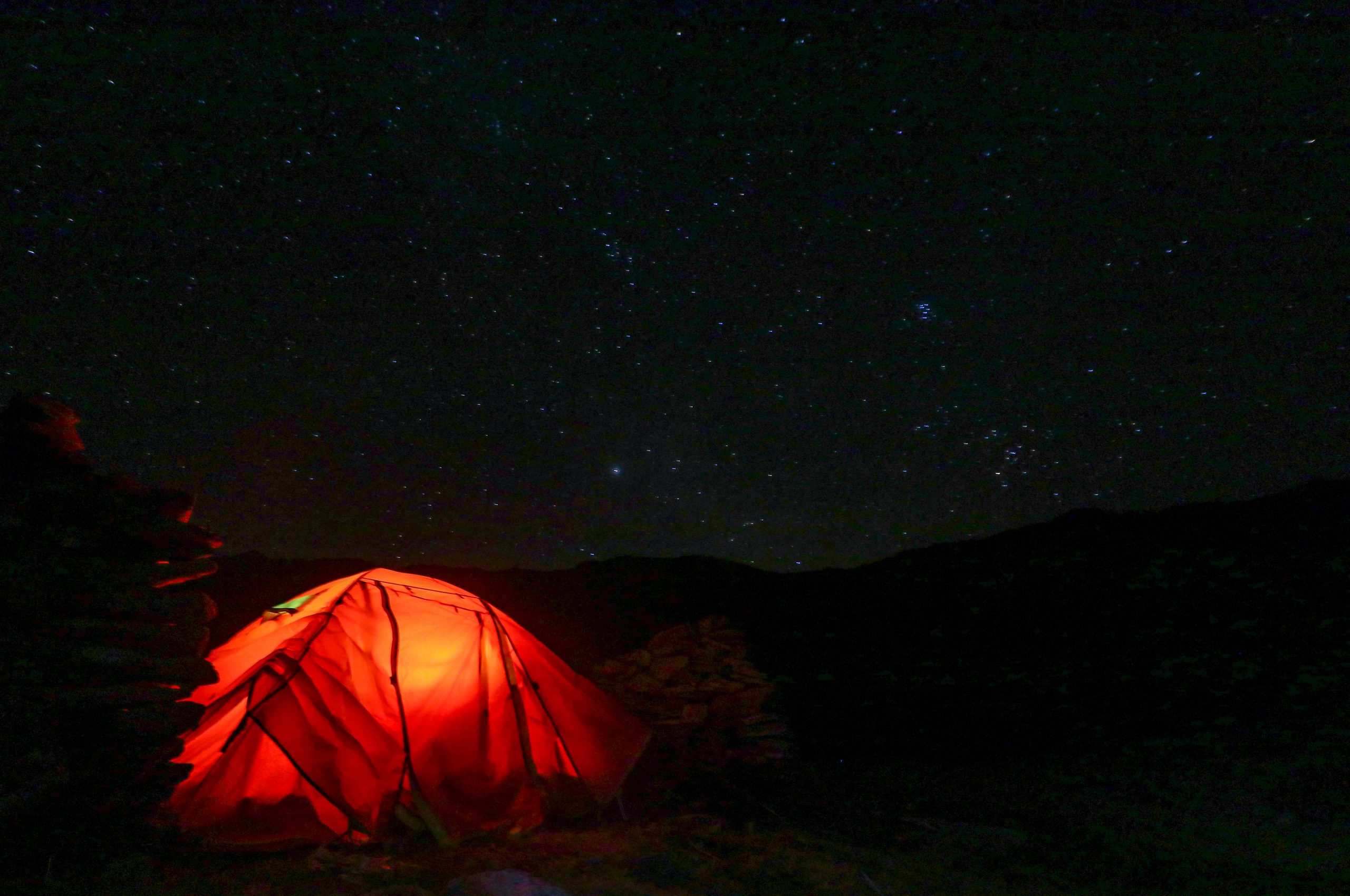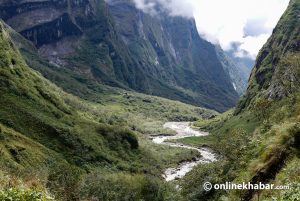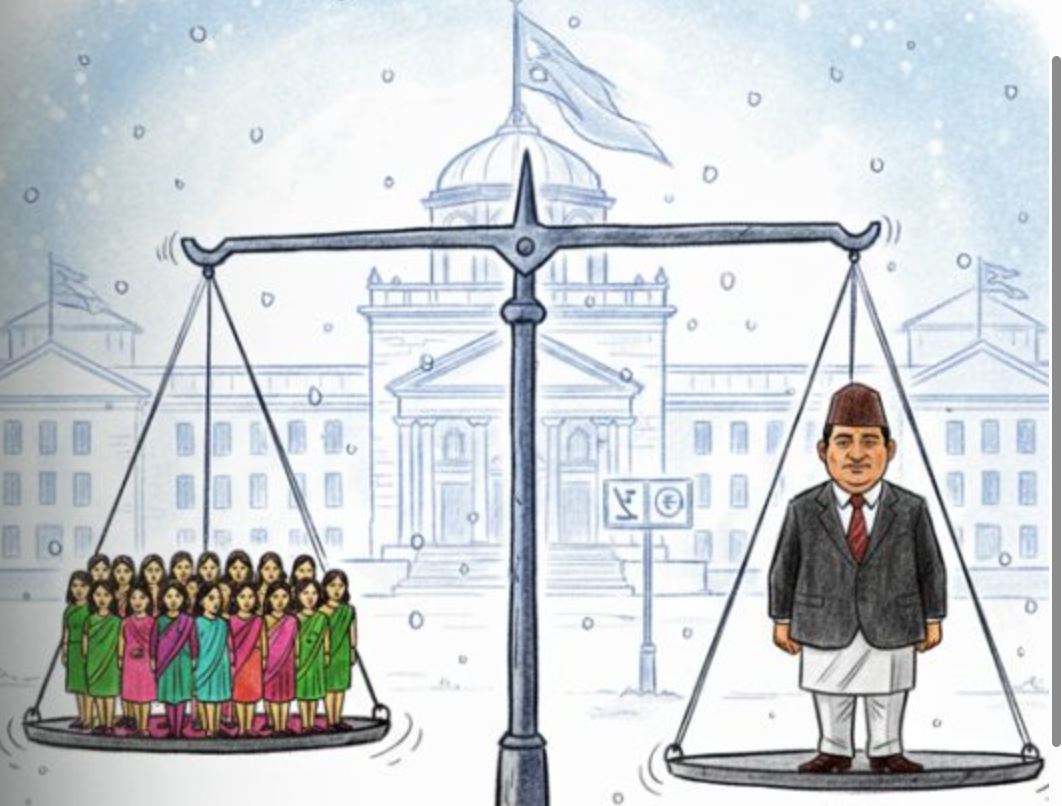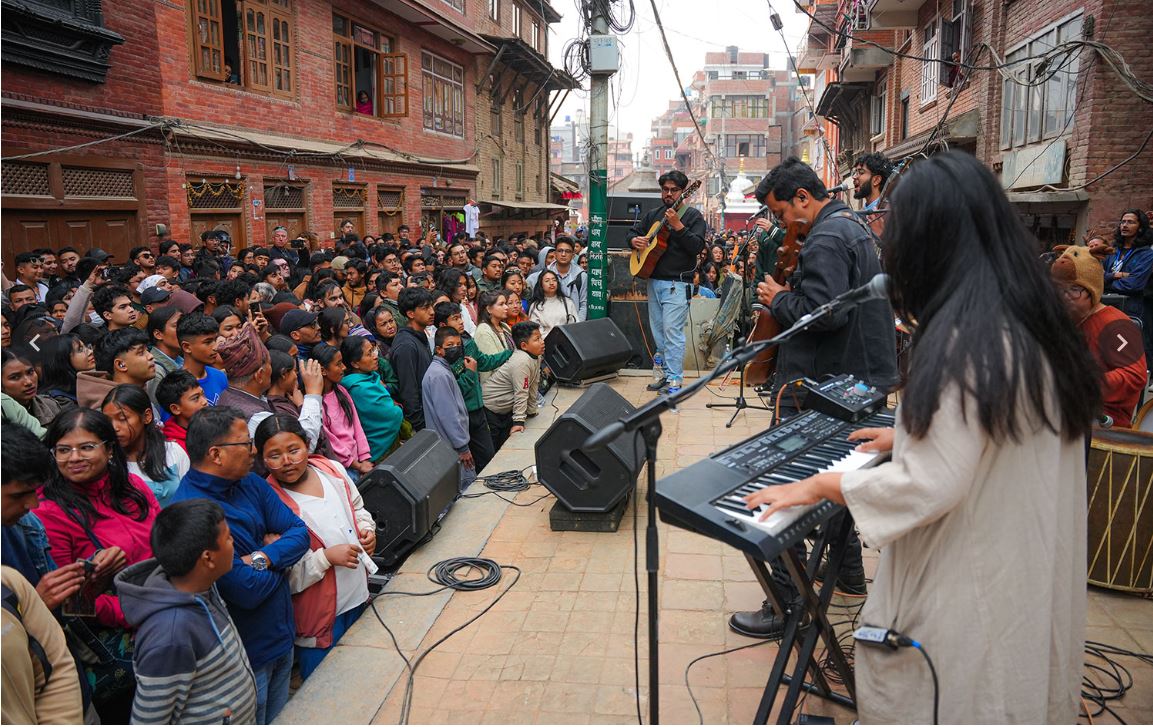When my friend Dibesh and I came up with the idea to trek to Panch Pokhari in Sindhupalchok, both of us were stoked. As we were planning the trip, his friends, Subodh and Sabrina, also decided to tag along.
As we were in the middle of a pandemic, in a bid to avoid people, we decided to make it a camping trek. What made the trek even better was we were going during the time of the Leonid meteor shower, which fell just after Laxmi Puja (Nov 14).
The planning part was easy. We just needed essentials like food, a portable gas cylinder, a tent and a sleeping bag. But mentally, we were not ready. None of us had ever slept in tents. But, we had to this time. Not only that, but we also had to cook our own food. Keeping that in mind, the four of us boarded a jeep and headed towards Bhotang, a village just 75 km from Kathmandu.
However, little did we know that in a few days, we would be walking towards Panch Pokhari, thirsty, hungry, and sleepless. We had not expected to sleep in cowsheds. What started as a chilled camping trip at first turned into a hardcore pilgrimage to a land where locals believe Lord Shiva planted wheat.
Day 1
Kathmandu to Deurali via Jarsingpauwa
The first day was spent on a jeep, travelling through typical Nepali roads. It was dusty and bumpy, full of narrow bends. The road until Melamchi was bearable, but from then on, all of us wished that we had rather walked. What made the ride worse was the driver’s constant nagging about how bad the road was. Hungry and tired, we reached Bhotang after around seven hours, then walked up to Deurali, set up the camps for the night before sunset and cooked dinner and got ready for bed. Just before we called it a night, the sky treated us with a few shooting stars. We went to bed hoping for more the next day.
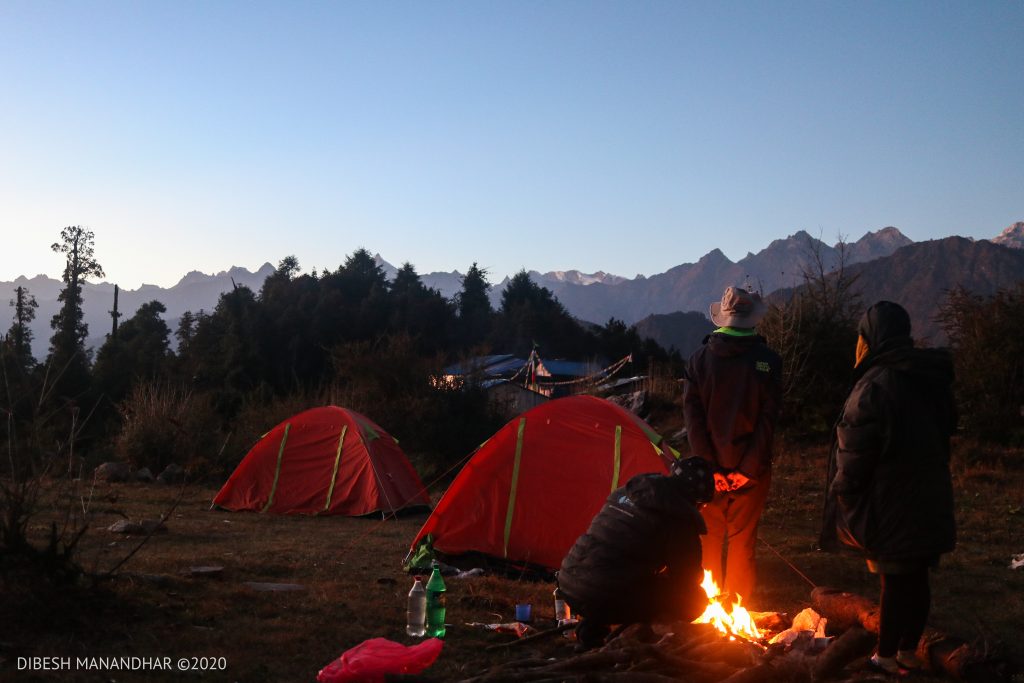
Day 2
Deurali to Tuppi Danda
We realised that sleeping in a tent was not going to be easy and would take some getting-used-to. With hardly any sleep, we had our breakfast and left Deurali. Our goal was to reach Nasimpati, nine hours away from Deurali, that day.
As we started our ascent, locals warned us about the trail ahead. They told us we would struggle to reach Nasimpati and even if we did, we had to stay in sheds as the lodge owners were all coming down for Diwali (they meant Bhaitika). However, as we had all essentials, we did not worry too much and headed towards it anyway.
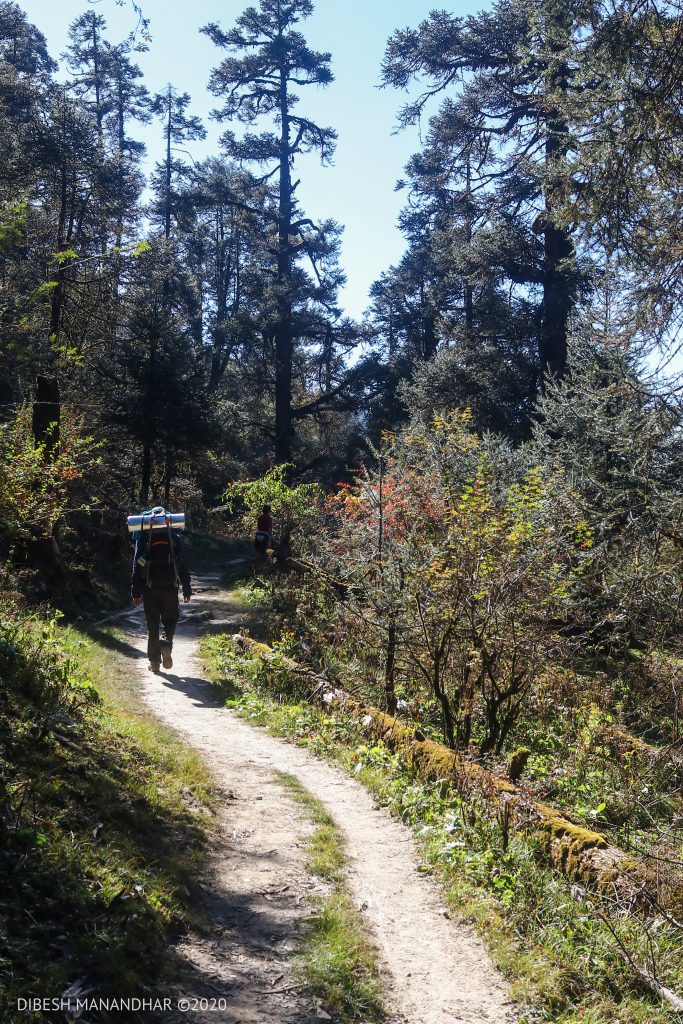
The trail from Deurali to Tuppi Danda was simple, but we made it a difficult one as we took a wrong trail hoping it was shorter. The trail took us to a hilltop, the one which we were not supposed to be at. Everyone was confused for a while, but we found the right trail and we were on our way. It took us three hours to reach Tuppi Danda, an hour more than expected. That is when Sabrina told us she couldn’t walk anymore. So, we decided to camp there and watched the sun set over the hills.
Day 3
Tuppi Danda to Tap Kharkha
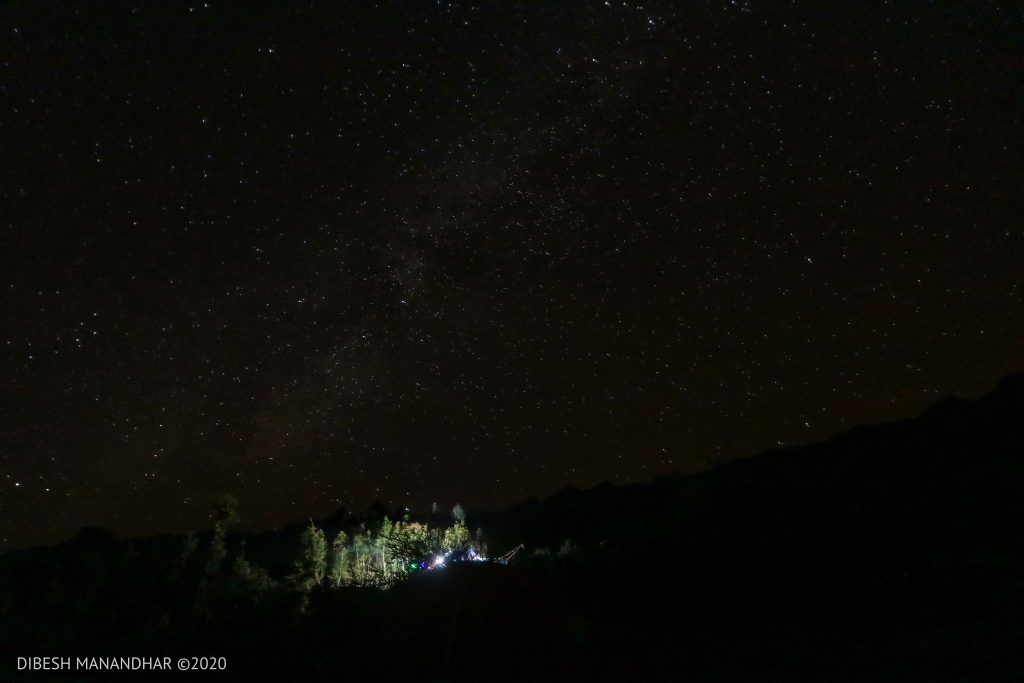
We wanted to reach Panch Pokhari on the third day. But it was going to be very tough. Locals told us it would take eight to 12 hours to reach the place. With grey clouds above us, Dibesh and I knew that reaching Panch Pokhari was just wishful thinking for the day.
The first 45 minutes of the trail from Tuppi Danda were easy. The trail was mostly flat with a few odd uphills and downhills through a forest. As soon as the trail reached a river, the only way was up until you would reach Tap Kharka. Filling water whenever we got the chance, we made it to Tap Kharka when the weather turned worse.
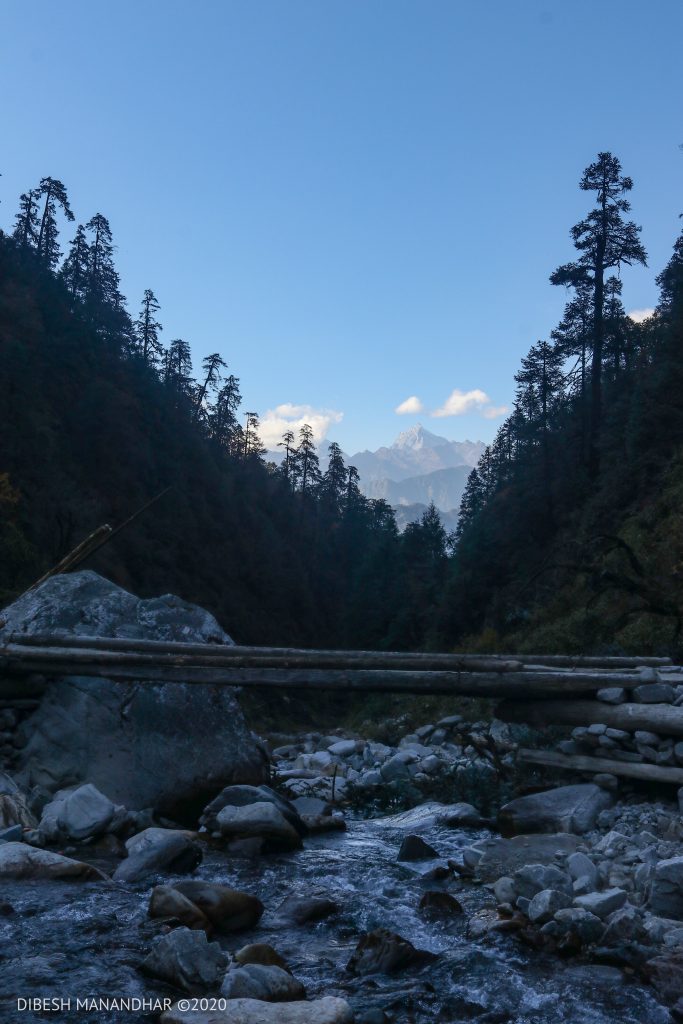
The grey clouds turned darker, and before we knew it, it started snowing. With a damp tent from the night before, we knew this was going to be a tough day for all of us. What saved us from the snow was a resting shed a bit further from Tap Kharka. The shed was an absolute mess. The surface was uneven, and it was tiny. But, with the uncertain weather, we had no choice but to stay there.
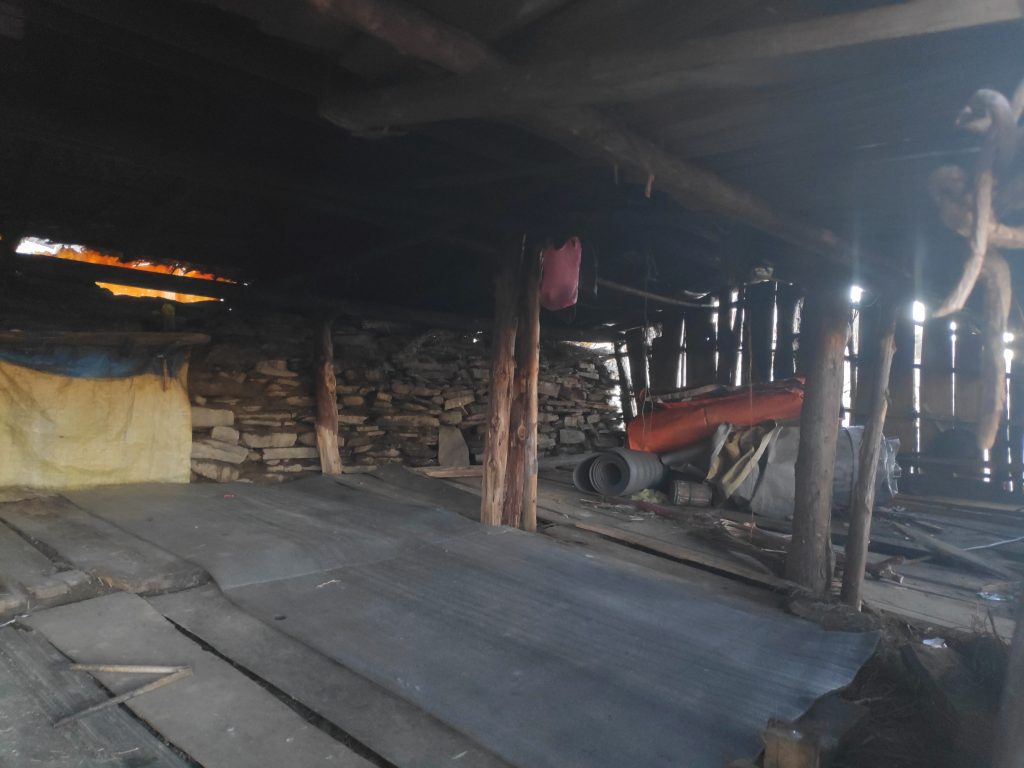
We set up our mats, but we were left in awe. While it kept snowing towards the north, the clouds opened up like a curtain to treat us to a stunning sunset. Even though it was bitter cold, the view provided us with enough warmth for the night. Watching shooting stars, wishing we would reach Panch Pokhari the next morning, we slept.
Day 4
Tap Kharka to Panch Pokhari
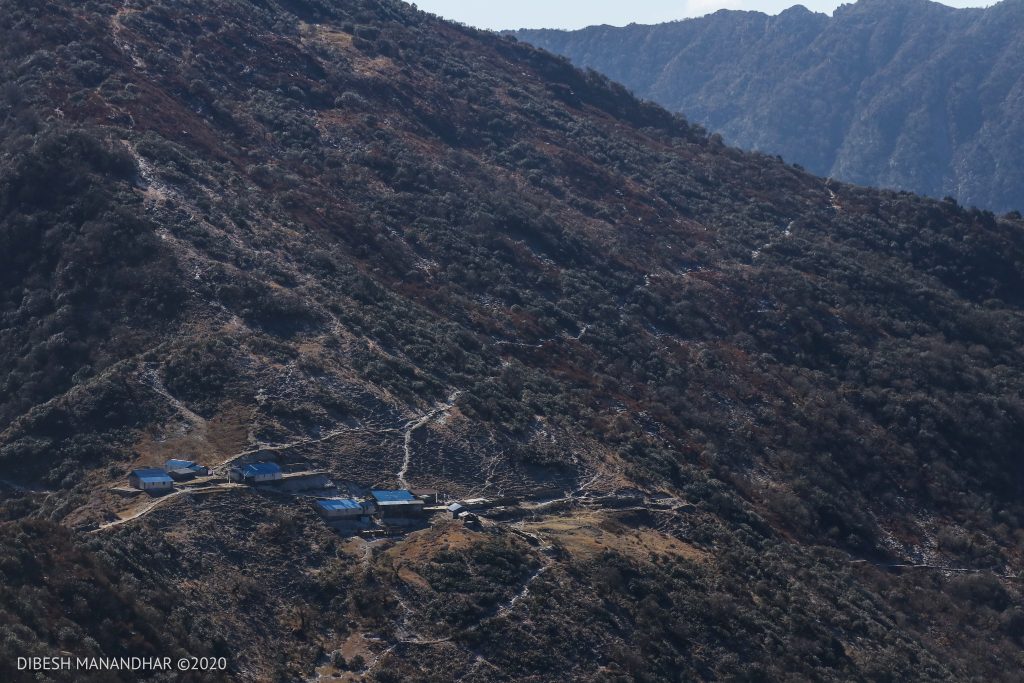
Sleeping at the shed was probably the toughest thing anyone of us had ever done. It was windy and cold the entire night. Even though we had tried to cover up the holes in the walls, it made little to no difference. By 4 am, all of us were awake and by 6, rationing and drinking what little water we had, we were on our way to Panch Pokhari.
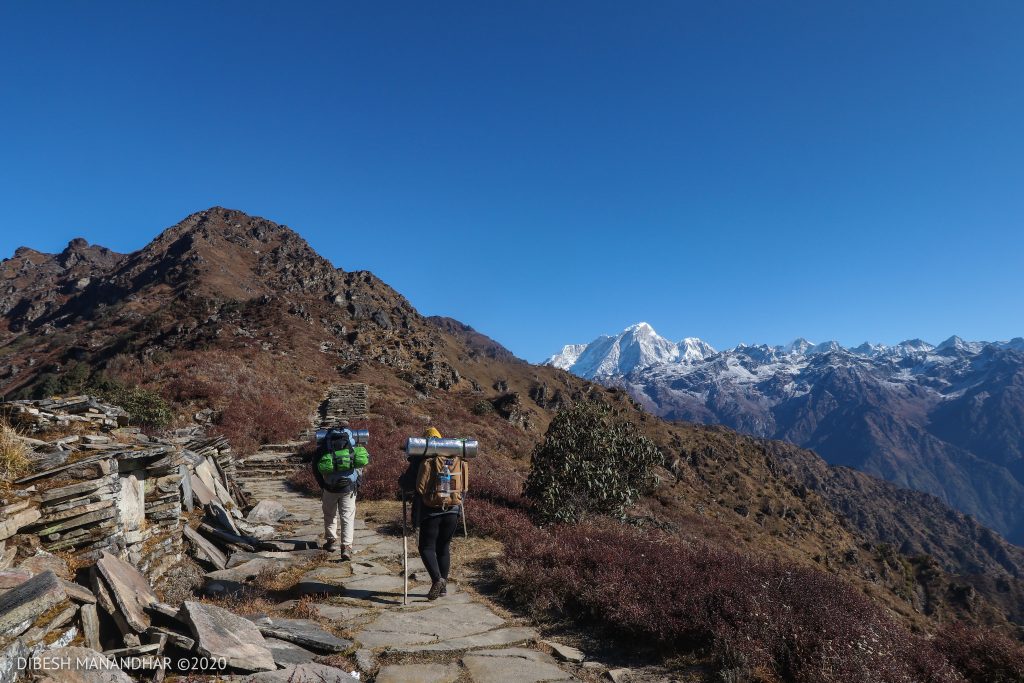
The first part of the trail was easy. Even though all of us were hungry, we reached the place in an hour. But, soon, whatever we had eaten was all gone. Apart from Dibesh, all of us looked glum. He even tried to look for water, but the one he found was as long as the route to Panch Pokhari. Not wanting to waste time, we drank what little water we had and left.
The trail to Panch Pokhari was very complicated. The first 30 minutes were easy. But, after a while, it started to get tedious as the trail went along the foot of the high hills for hours. Winding uphill and downhill, passing through rocky terrain and what looked like landslide areas, we reached a staircase of 165 steps. Thirsty, hungry, and with no energy left, Dibesh and I pushed ourselves to the top of the stairs hoping we had reached Panch Pokhari, but what we saw from the top shattered us.
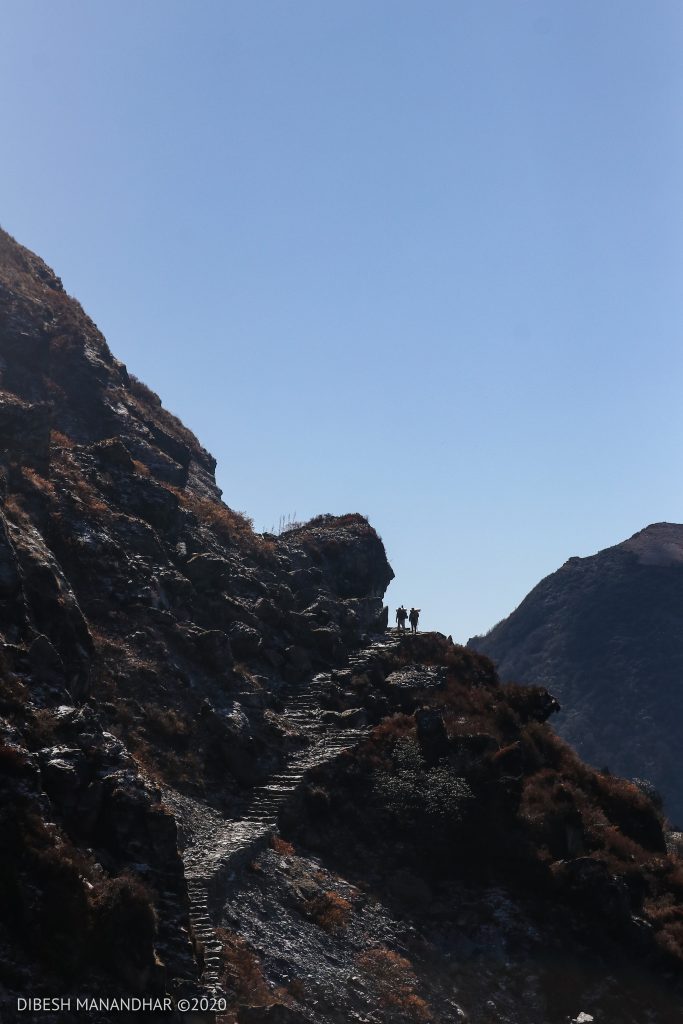
We had not reached Panch Pokhari but had reached the final checkpoint called Lauri Binayak. With our throats dry, we sat and started collecting snow so that we could melt and drink it. There, we met a few trekkers on their way back. A few gulps of water the three boys gave us went a long way. Drinking that and a can of Red Bull, our final push towards the destination began. Just as we started, it started snowing again.
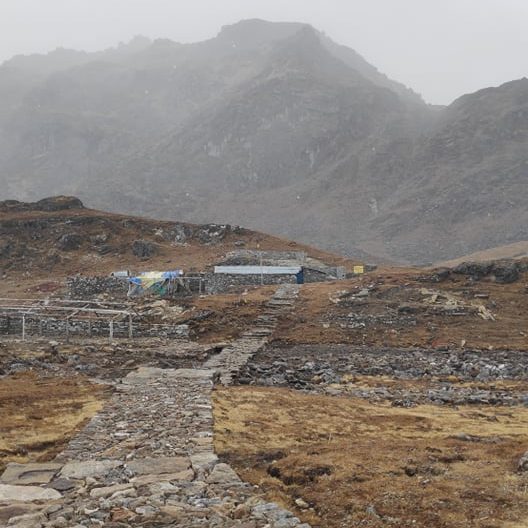
Trying to squeeze every ounce of energy, lifting one leg at a time we finally reached Panch Pokhari. As soon as we reached, Dibesh and I threw our bags in the hall, headed to the kitchen and drank a thermos of water sitting next to the fire waiting for Sabrina and Subodh. As they arrived, we ate dal-bhat after what felt like years and went on a stroll around the area before deciding to sleep indoors.
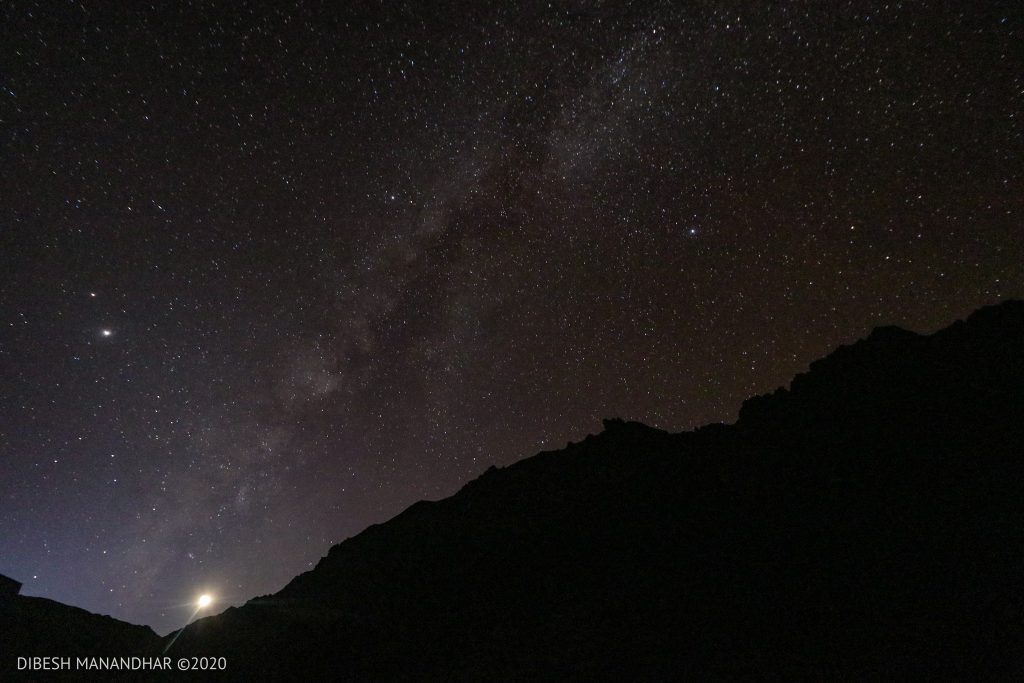
Day 5
Panch Pokhari
The next morning, everyone woke up late. It looked bright and sunny from the room, but as we went outside, the wind gave us a harsh reality check. From the sleeping bag, we went straight into the kitchen and sat next to the fire drinking local warm liquor.
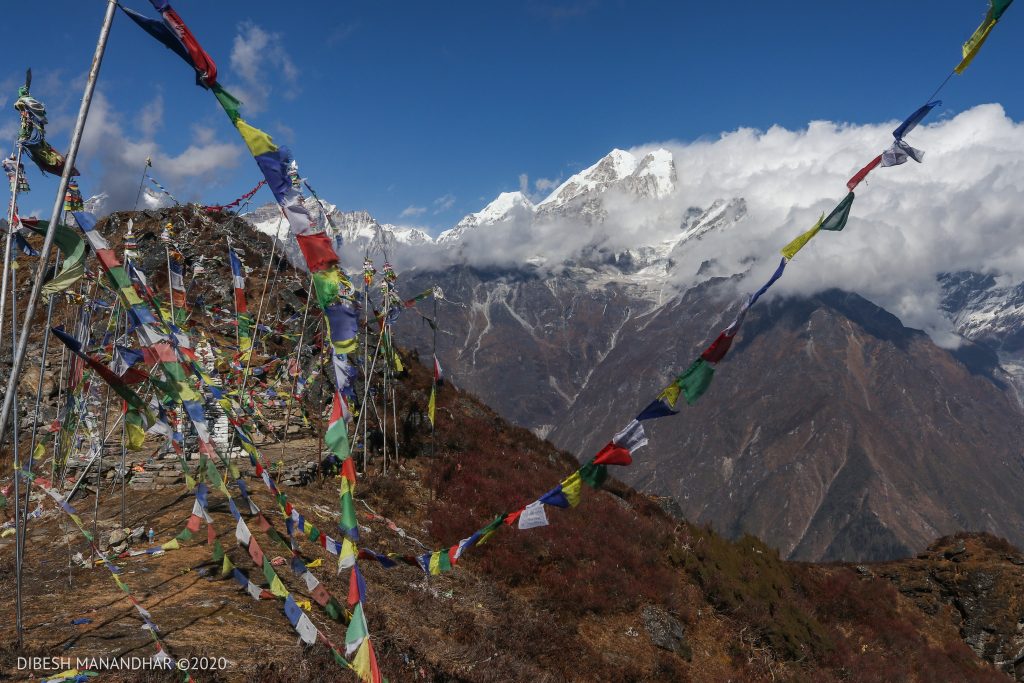
There, we decided to teach the lodge owner Prakash Tamang how to make pancakes. A few hours later, he was flipping pancakes like a pro. Around noon, we headed to the viewpoint as we thought we were getting very lazy.
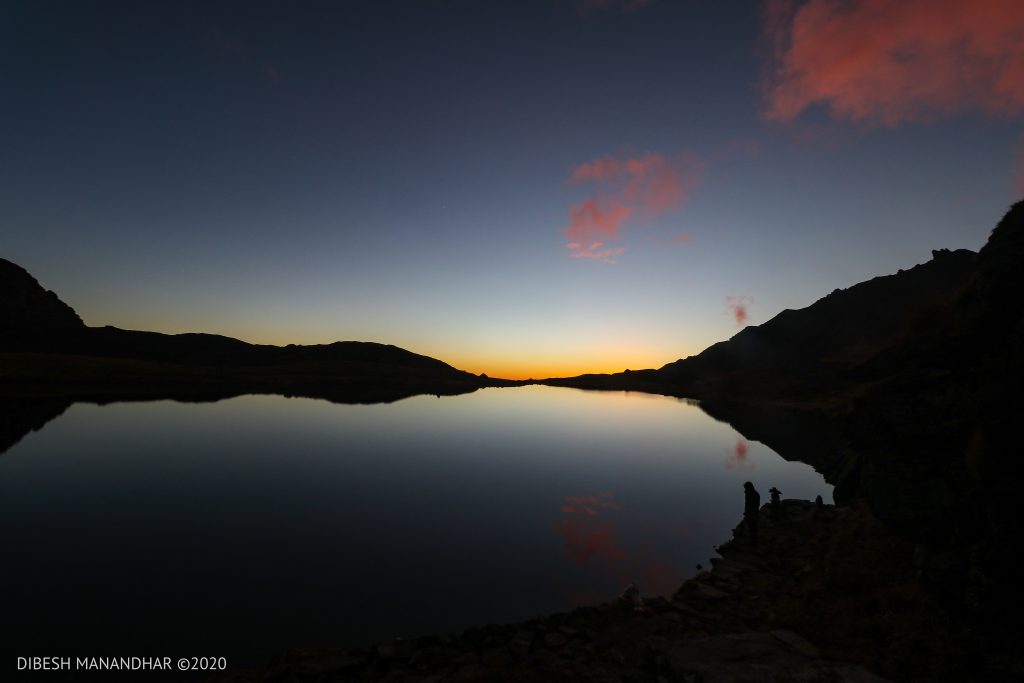
The trail to the viewpoint is long and winding. But being the adventurers that we were, we climbed the steep hill which went through some rocky parts disregarding the trail in general. It was not easy, but it was refreshing. The mountains to the east of the viewpoint were covered in clouds, but all five ponds of Panch Pokhari, which were around 20 minutes away, were visible.
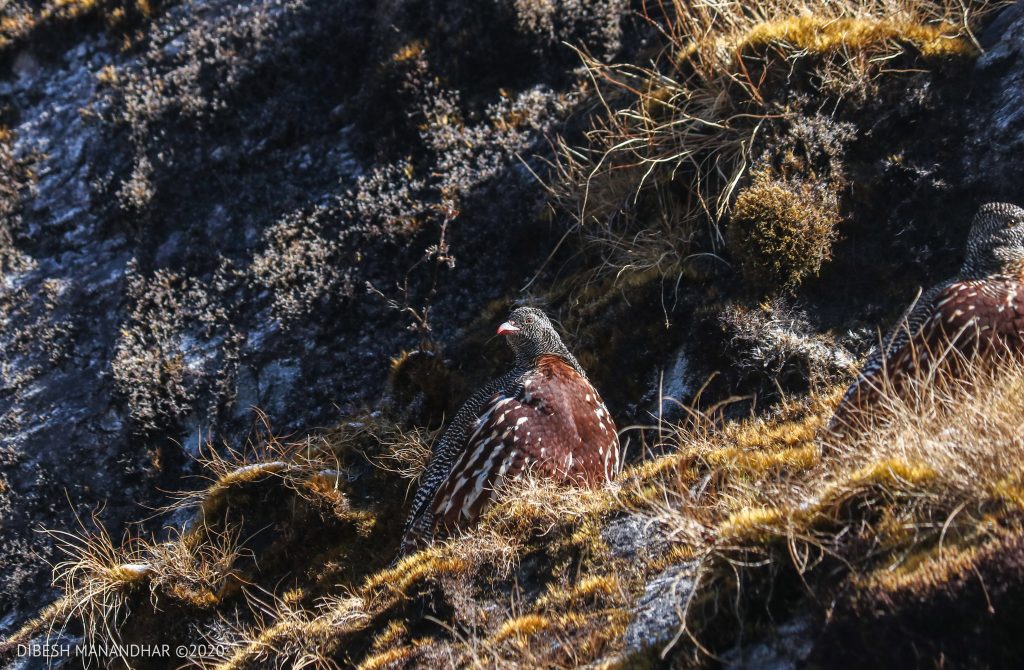
It was windy, gloomy and cold. But, the climb to the top was worth it. That view took all our tiredness away. It gave us the added motivation to come back to the viewpoint the next morning. That is when Dibesh decided to spend the night in the tent at an altitude of around 4,100 metres. I wanted to join in, but I could not muster up the courage to do so. We headed down, came back up with the tent and the sleeping bags, and set up the camp for Dibesh and headed for dinner.
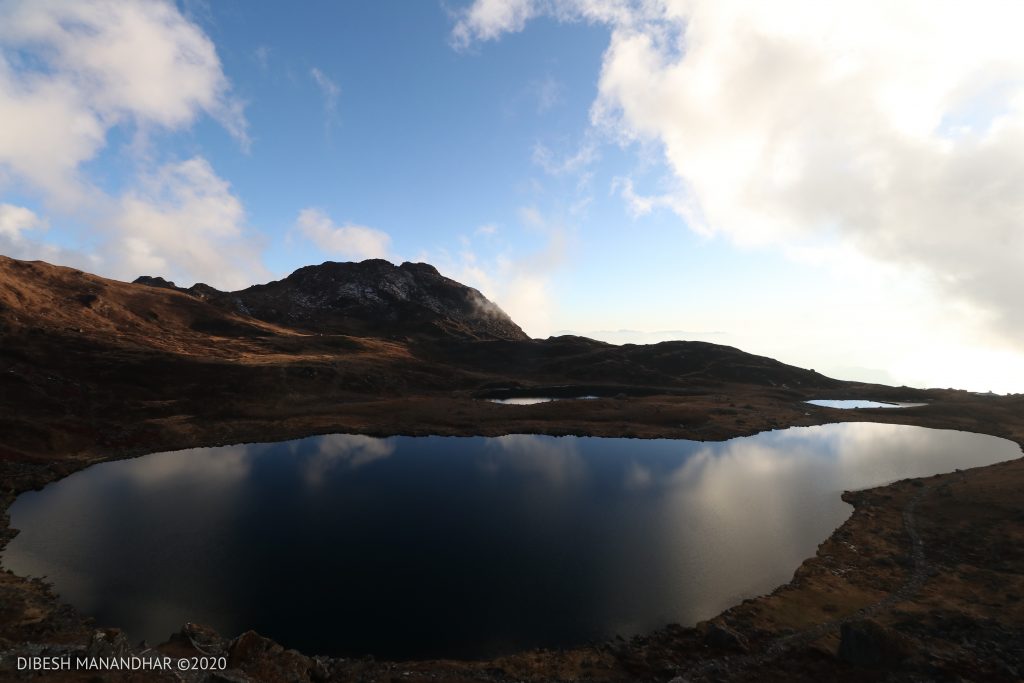
The view of the sky from Panch Pokhari was just amazing. The moon had made an entrance but soon set beyond the hills. But, we could see the galaxy of stars–millions of them. Some turned into shooting stars, and as romantic we were, all of us made wishes.

Day 6
Panch Pokhari to Tuppi Danda

The next morning was the most magical morning I had ever seen. Sabrina decided to stay in so Subodh and I, carrying a thermos of hot water, started the steep climb to the top. As we neared the top of the hill, we saw the daybreak in its most splendid form.
The sun slowly rising behind the mountains gave out a mellow yellow glow on the top. Above the yellow glow were stars–not just one, but millions of stars. Subodh and I were in awe. We had not expected the view. Just before sunrise, we caught up with Dibesh who was up there at least 30 minutes before us.
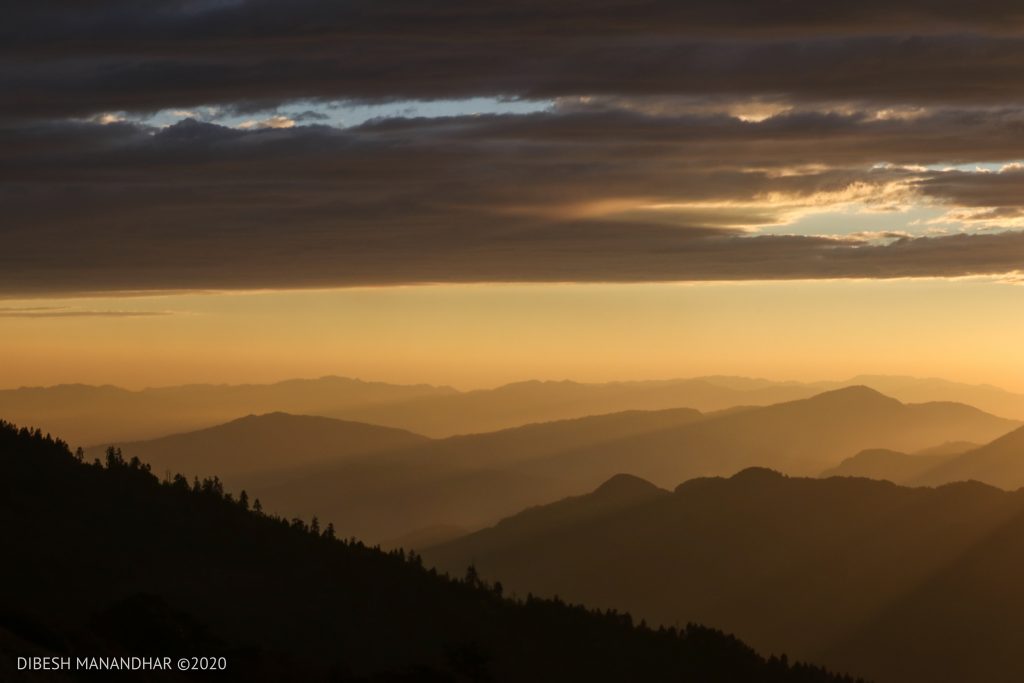
As we sat there at the hilltop drinking hot water like old men, we saw the sunrise over Jugal Himal. The sun brought a little more warmth and slowly illuminated a few of the five ponds. That sunrise marked the end of our journey. We had to leave, but we did not want to.
Going back was a bittersweet moment. The journey was ending. However, before that, we had to walk six hours – mostly downhill. Until Nasimpati, we were alone. There, we started to meet people.

After five days in the wilderness, we finally saw people. Like us, they too were struggling coming up. Encouraging them, and offering them water, we walked and walked and walked. It felt like Tuppi Danda would never come. But, walking through the forest that was bustling with fall colours, we reached Tuppi Danda.
Then, we realised how dirty the trails had gotten. People who came up had left loads of trash on the trail, from chocolate, biscuit and instant noodle wrappers to plastic cups and bottles. We were back into civilisation. And, our journey was over.



